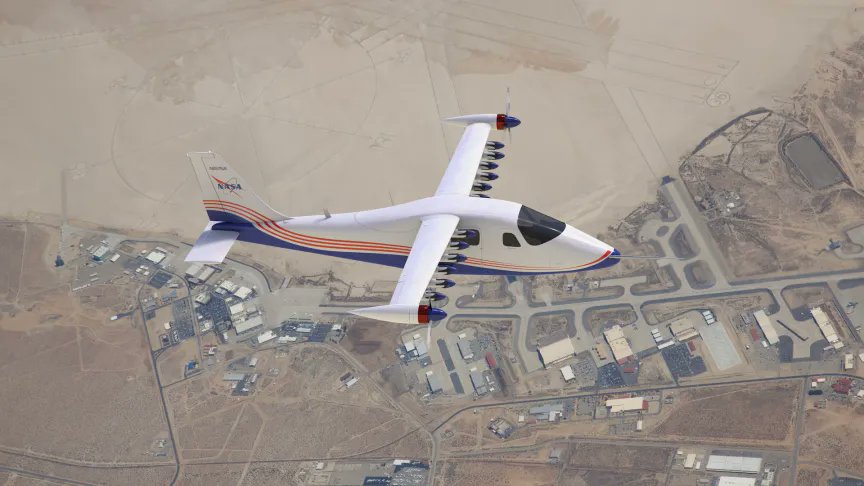


NASA’s X-57 Maxwell all electric aircraft reached another milestone toward its first flight with the successful installation of two 400-pound lithium-ion battery packs in the cabin of the plane.
Worth mentioning , the space agency’s X-planes were launched in 1944 to pursue research into high-speed aircraft. Ongoing projects , NASA's quiet supersonic jet (X-59 QueSST ) and electric aircraft (X-57 “Maxwell”) are part of this “X-planes” series , and are moving closer to their first test flights.
The X-57 project is the agency’s first all-experimental electric aircraft, and an early part of NASA’s work to develop sustainable aviation solutions. Instead of aviation fuel, it will use commercial, rechargeable, lithium-ion batteries for the energy its motors need for flight.

A rendering of the NASA X-57 Maxwell.
The X-57 program was started in 2016 as part of NASA’s Scalable Convergent Electric Propulsion Technology Operations Research Project (SCEPTOR). The acronym essentially stands for developing low-emissions aircraft powered by electric motors.
The “Maxwell,” an Italian Tecnam P2006T, was converted last year into an electric aircraft by replacing its conventional Rotax engines with two electric motors made by Joby Aviation.
To reach this point, the X-57 project team repeatedly tested the batteries to ensure they can safely power the aircraft for an entire flight, and designed custom, lightweight cases to keep the batteries secure.
After the battery installation, the crew successfully tested the X-57 aircraft motors spinning off battery power. The motors had previously spun, but were drawing energy from the test facility, or from the batteries when they were sitting outside of the aircraft.
Prior to the motor spin test, the aircraft’s cruise motors controllers underwent random vibration tests. These hardware acceptance tests take place on shake tables set to randomly vibrate at the same frequencies as the accelerating motors, to ensure all systems stay functional in flight. Random vibration acceptance testing for all the cruise motor controllers for the X-57 aircraft have taken place to make sure that all the systems stay functional while they endure the vibration environment expected during flight.
Additionally, the cruise motors were placed on a dynamometer, an electric motor speed tester, to make sure they will operate that the maximum planned temperature, power, torque, speed, voltage, and current during flight.
NASA will conduct taxi and flight operations once required integration and system tests are complete and the aircraft is performing as expected.
Back in July 2021 , X- 57 Maxwell had successfully completed the high-voltage testing , that powered the aircraft from an auxiliary power supply to test the functionality of the integrated systems under full power.
In the coming months, the X-57 project will begin a series of test flights. Each will expand upon the others, with data collected to understand aircraft operation and performance.
X-57—and most of the X-Planes are being designed to pass along its findings to the aeronautics industry, rather than creating a new aircraft type , The primary goal of the X-57 project is to share the aircraft’s electric-propulsion-focused design, airworthiness process, and technology with industry, standards bodies, and regulators to inform certification approaches for all-electric propulsion in emerging electric aircraft markets.
